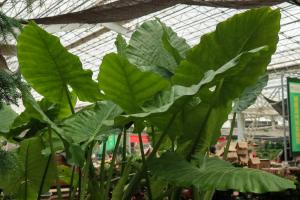When to Plant Tomatoes in Zone 7
When it comes to growing tomatoes, timing is everything. In Zone 7, which includes states such as Virginia, North Carolina, and Tennessee, the ideal time to plant tomatoes can vary depending on several factors, including weather patterns and specific growing conditions. However, in general, there are a few key things to keep in mind when considering when to plant tomatoes in Zone 7.
Understanding Your Local Climate
One of the most important things to consider when planting tomatoes in Zone 7 is the local climate. This will help you determine the best time to begin planting, as well as the specific methods and techniques that you will need to use in order to ensure the health and success of your tomato plants.
Typically, Zone 7 experiences a moderate temperature range, with average lows ranging from 0 to 10 degrees Fahrenheit in the winter and highs ranging from 75 to 85 degrees Fahrenheit in the summer. However, there can be significant variations in temperature, humidity, and rainfall, depending on your specific location within the zone.
Choosing Your Tomato Varieties
Another important factor to consider when planning your tomato planting in Zone 7 is the specific varieties of tomato that you will be growing. Different varieties of tomatoes have different requirements for things like water, sunlight, and temperature, so it is important to choose varieties that are well-suited to your local climate and growing conditions.
Some popular varieties of tomatoes for Zone 7 include Early Girl, Roma, and Better Boy. These varieties are known for their hardiness and ability to withstand typical weather patterns in the region. However, there are many other varieties of tomato to choose from as well, so be sure to do your research and choose the ones that will work best for you.
Preparing Your Soil and Planting Your Tomatoes
Once you have determined the best time to plant tomatoes in Zone 7 and have chosen the right varieties, it is time to begin preparing your soil and planting your tomatoes. This process typically involves several steps, including:
Cultivating your soil to a depth of at least 8 inches
Adding organic matter, such as compost or aged manure, to the soil to improve its structure and fertility
Choosing a sunny location for your tomato plants, as they need at least 6 hours of direct sunlight each day
Digging holes for your tomatoes that are deep enough to accommodate the roots, but not so deep that the stems are buried
Watering your newly planted tomatoes thoroughly and consistently, as they need regular moisture in order to grow and produce fruit
By following these steps and paying close attention to the unique requirements of your tomato varieties, you should be able to successfully grow healthy, robust tomato plants in Zone 7.
Troubleshooting Common Tomato Growing Problems
While growing tomatoes in Zone 7 can be a rewarding experience, it is not without its challenges. Some of the most common problems that tomato growers in this region encounter include:
Plant diseases, such as blight or wilt
Pests, such as aphids or tomato hornworms
Extreme weather events, such as droughts or heat waves
To prevent and manage these issues, it is important to maintain a regular care and maintenance routine for your tomato plants. This might include things like regularly inspecting your plants for signs of disease or pests, providing support for your plants as they grow, and monitoring weather conditions closely to ensure that your plants are getting the right amount of water and sunlight.
Conclusion
Growing tomatoes in Zone 7 can be a challenging but incredibly rewarding experience. By understanding the unique climate and growing conditions in your area, choosing the right varieties of tomato, and following a careful care and maintenance routine, you should be able to enjoy a bountiful harvest of fresh, delicious tomatoes throughout the growing season.

 how many times do yo...
how many times do yo... how many planted tre...
how many planted tre... how many pine trees ...
how many pine trees ... how many pecan trees...
how many pecan trees... how many plants comp...
how many plants comp... how many plants can ...
how many plants can ... how many plants and ...
how many plants and ... how many pepper plan...
how many pepper plan...

































